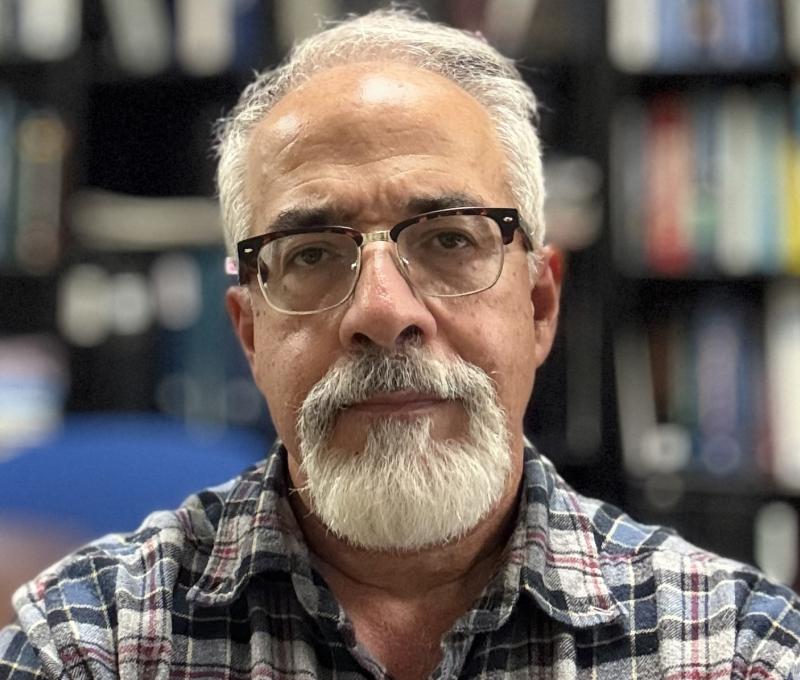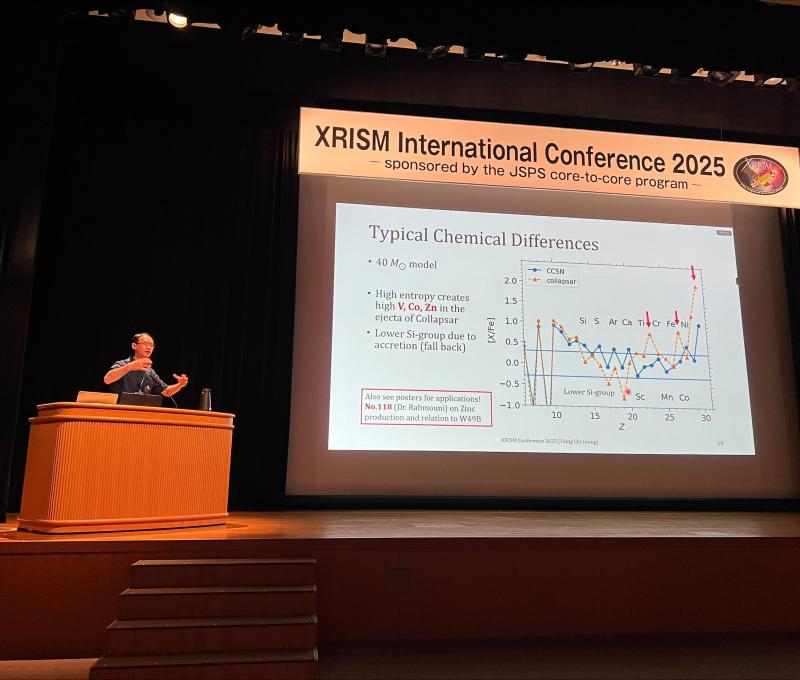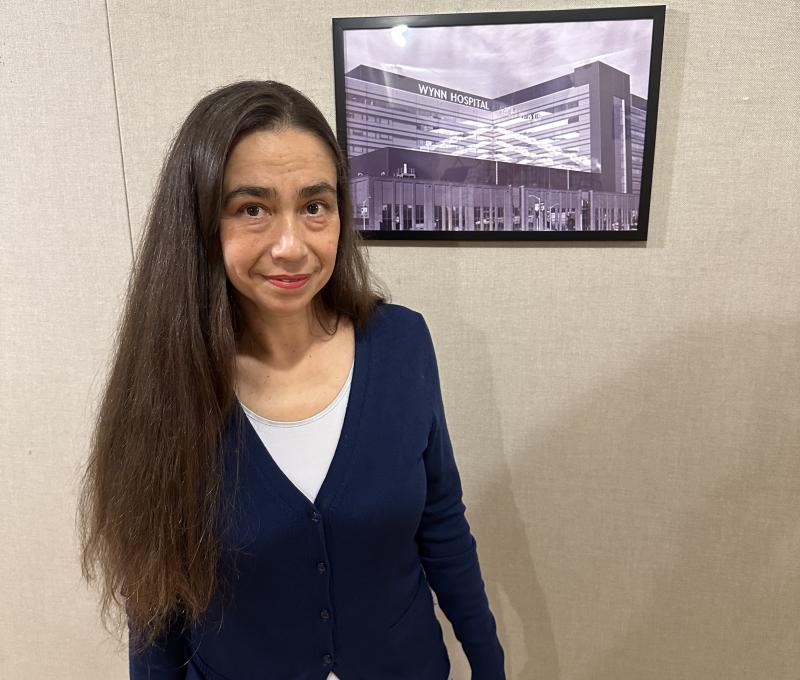News Release: SUNY Poly Professors Awarded $330,000 for Two Distinct Cutting-Edge Nanotechnology-Centered Research Projects

For Release: Immediate – November 20, 2018
Contact: Steve Ference, Director of University Communications
(518) 956-7319 | sference@sunypoly.edu
Dr. Serge Oktyabrsky received $200,000 from the U.S. Department of Energy to develop next-gen scintillation detectors based on quantum dots to enable a better understanding of basic particles
Dr. Spyros Gallis received $130,000 from the National Science Foundation to develop critical material and physical properties of new erbium-doped silicon carbide photonic nanostructures for enhanced biological imaging, quantum communications applications
ALBANY, NY – SUNY Polytechnic Institute (SUNY Poly) announced today that two professors have been selected to receive a total of $330,000 via the awarding of two separate nanoscience and nanoengineering-focused grants:
- Professor of Nanoscience Dr. Serge Oktyabrsky has been awarded $200,000 from the U.S. Department of Energy (DOE) for research aiming to demonstrate a novel type of scintillation detector that upon detection of small particles, can emit measurable light with unsurpassed speed and yield. This greater sensitivity and speed is essential for several DOE High Energy Physics areas of research, and could help to detect the interaction of quantum particles to better understand their properties and actions, for example, in addition to the potential for medical and nuclear security applications; and
- Assistant Professor of Nanoengineering Dr. Spyros Gallis (Spyridon Galis) was awarded $130,000 by the National Science Foundation (NSF) — Directorate of Engineering for research which will help develop critical physical properties and provide a fundamental understanding of new silicon carbide photonic nanostructures that have erbium ions added to them for the realization of high-temperature CMOS-compatible quantum emitters at telecommunications wavelengths. The emission from erbium ions at telecommunication wavelengths can be controlled and amplified by these photonic nanostructures and can improve light-based devices, with applications in areas such as biological imaging and sensing, quantum storage of single-photons, and long-distance quantum communications.
“I am proud to congratulate Professors Serge Oktyabrsky and Spyros Gallis for being awarded these grants which will support research that could help us to better understand the behavior of fundamental particles through improved detection capabilities, in addition to providing us with further knowledge about how photonic nanostructures, combined with erbium ions, can be used to improve a variety of quantum-based applications,” said SUNY Poly Interim President Dr. Grace Wang. “We are thankful to the Department of Energy and National Science Foundation for recognizing the exciting potential of these research projects being led by our outstanding faculty members who continue to push the boundaries of knowledge as they provide hands-on educational opportunities for our students.”
Both research projects will provide hands-on learning opportunities to SUNY Poly students. In Dr. Oktyabrsky’s lab, a graduate student will build the scintillation detector and perform its initial testing, along with support from two SUNY Poly staff scientists. Dr. Gallis’ research project will provide first-hand laboratory experience for both undergraduate and graduate students at SUNY Poly, as well as summer interns, who will simulate with numerical calculations the theoretical behavior of erbium emissions in the photonic nanostructures.
“These two grants are the latest example of how SUNY Poly’s faculty are driving research that can impact a wide range of applications and enhance our understanding of the world around us,” said SUNY Poly Interim Provost Dr. Steven Schneider. “The DOE and NSF grants will allow SUNY Poly students to take an active, hands-on role in these important areas of research, and I congratulate Drs. Oktyabrsky and Gallis on this news.”
Dr. Oktyabrsky Research Grant—“Performance of scintillation detectors based on quantum dots in a semiconductor matrix”
The DOE award supports the development of quantum dots (QD’s), semiconducting Indium Arsenide (InAs) particles approximately 10 nanometers in size, embedded into a Gallium Arsenide (GaAs) matrix. This arrangement enables the QD’s to act as artificial luminescence centers, which, when struck by gamma rays or other particles, emit luminescence, thereby acting as a measurable detector of such particles. If successful, the research will lead to the development of scintillation detectors with unsurpassed speed and light yield.
The main goal of the proposed research is to develop and test a novel scientific approach and technology for a QD semiconductor scintillation detector, develop a physical understanding of the underlying processes, and establish credible performance parameters of the detector. As supported by the DOE, Office of Science, High Energy Physics (HEP) Program, the technology would mostly be focused on HEP applications, such as using the detectors to identify multiple primary interactions, for example, at the Tevatron or Large Hadron Collider. In addition, the development of an ultra-high rate photon counting detector could be used for muon-to-electron conversion experiments, and because they are expected to have unprecedented energy resolution at high counting rates, the QD semiconductor scintillators could also be useful for non-accelerator dark matter searches and searches for new physics phenomena.
Eventually, by taking advantage of the picosecond-range timing (one trillionth of a second) and energy resolution of single X-ray photons, these detectors could also be used to reduce the radiation doses that patients receive via medical imaging/tomography applications, such as those used in X-ray computed tomography, or CT Scans, as well as positron emission tomography, or PET scans, in addition to improving spectroscopic accuracy in nuclear security applications.
“I am thrilled to congratulate Dr. Oktyabrsky, whose research, supported by the Department of Energy, can lay a strong foundation for being able to detect and measure quantum particle behavior through this enhanced scintillation detector. This can enable a more detailed understanding of high-energy physics, with ramifications for how we comprehend the universe around us. Dr. Oktyabrsky’s research is just one great example of what our faculty are working on each day in collaboration with students, who are able to engage by using SUNY Poly’s world-class capabilities to design and deploy new tools for obtaining new information,” said SUNY Poly Interim Dean of the College of Nanoscale Sciences; Empire Innovation Professor of Nanoscale Science; and Executive Director, Center for Nanoscale Metrology Dr. Alain Diebold
“I am thankful to the Department of Energy for this grant which will support Quantum Dot semiconductor scintillators that could provide about 5x higher light yield and 20x faster decay time, potentially opening a pathway for the development of very low mass tracking detectors with picosecond-scale time-of-flight resolution, along with gamma detectors with energy resolution close to 1% at 1 million electron volts and room temperature, which would be capable of sustaining counting rates greater than 100 megahertz, or one million cycles per second,” said Dr. Oktyabrsky. “In addition to my gratitude for this DOE award, I am also thankful to Fermi National Accelerator Laboratory (Fermilab) for providing inspirational guidance in high-energy physics applications and support with detectors testing.”
Dr. Spyros Gallis Research Grant—“EAGER: On-Demand Silicon Carbide Photonic Nanostructures for Quantum Optoelectronics at Telecom Wavelengths”
Dr. Gallis’ research project aims to address fundamental questions pertaining to the material and physical behaviors of erbium-doped silicon carbide (SiC) photonic nanostructures. By deterministically integrating rare-earth erbium ions and by being able to engineer the ion’s emission properties in these photonic nanostructures, Dr. Gallis expects to develop potentially disruptive advances in single-photon emission at low-loss telecom C-band wavelength region ~1540 nm. The light emitted by a single-photon emitter is fundamentally different from laser or thermally produced light. The key distinction relates to the time intervals between the emitted photons in the light beam. Photons can either cluster together in bunches or they can have regular gaps between them. In the latter case, an ion cannot emit two photons at once, which can lead to a non-classical light (single-photon emission) source. This is a required property for the development of future quantum optoelectronics and long-distance quantum communication applications using existing fiber-optical-based infrastructures. Applications that could also benefit include, for example, telecom quantum memories and repeaters, to enable the storage of information based on quantum bits, which are the more complex version of today’s bits that can have more than an on (1) or off (0) state.
“I am proud to congratulate Dr. Gallis on this NSF research grant, which can drive advancements in the burgeoning quantum computing and communication space, with opportunities to develop these cutting-edge technologies while allowing our students to gain first-hand skills that can serve them well for a lifetime of learning,” said SUNY Poly Interim Dean of the College of Nanoscale Engineering and Technology Innovation and Associate Professor of Nanoengineering Dr. Michael Carpenter.
“I am grateful to the NSF Electronics, Photonics and Magnetic Devices (EPMD) Program for the support of this research, which can pave pathways in the uncharted territories of quantum optoelectronics and communication at telecom C-band wavelengths, empowering me and my research team to innovate and educate,” said Dr. Gallis. “I am also excited that this research can further attract students to our globally recognized College of Nanoscale Engineering and Technology Innovation, inspiring them to work in new quantum photonics research programs that can lead to game-changing technological developments.”
News of these latest grants follows other recent research funding announcements by SUNY Poly, including:
Associate Professor of Nanoengineering Dr. Woongje Sung was selected to receive $2,078,000 in total federal funding from the U.S. Army Research Laboratory (ARL) for advancing the “MUSiC,” or the Manufacturing of Ultra-high-voltage Silicon Carbide devices for more robust power electronics chips with a range of military and commercial applications;
Professor of Nanobioscience Dr. Nate Cady was recently awarded $500,000 in funding from the National Science Foundation to develop advanced computing systems based on a novel approach to the creation of non-volatile memory architecture;
Associate Professor of Nanobioscience Dr. Janet Paluh was recently awarded more than $970,000 from the New York State Health Department—Spinal Cord Injury Research Board (NYSCIRB) for collaborative research using nanotechnology and human stem cell-derived neural cell therapies to create an effective treatment platform for spinal cord injuries in patients, in addition to a $162,000 sub-award from the New York State Health Department—NYSTEM Innovative, Developmental, or Exploratory Activities (IDEA) program for collaborative research with the University at Albany to identify new types of injury and repair biomarkers based on cell communication to benefit prognosis or diagnosis of traumatic brain injuries; and
Associate Professor of Nanobioscience Dr. Michael Fasullo was awarded $446,000 by the National Institutes of Health National Institute of Environmental Health Sciences (NIH-NIEHS) to investigate with a number of partners how genetics can increase the risk of diet-associated colon cancer.
####################
About SUNY Polytechnic Institute (SUNY Poly)
SUNY Poly is New York’s globally recognized, high-tech educational ecosystem. SUNY Poly offers undergraduate and graduate degrees in the emerging disciplines of nanoscience and nanoengineering, as well as cutting-edge nanobioscience and nanoeconomics programs at its Albany campus, and undergraduate and graduate degrees in technology, including engineering, cybersecurity, computer science, and the engineering technologies; professional studies, including business, communication, and nursing; and arts and sciences, including natural sciences, mathematics, humanities, and social sciences at its Utica/Rome campus; thriving athletic, recreational, and cultural programs, events, and activities complement the campus experience. As the world’s most advanced, university-driven research enterprise, SUNY Poly boasts billions of dollars in high-tech investments and hundreds of corporate partners since its inception. For information visit www.sunypoly.edu.







